Pomerol wines, at the best price
-
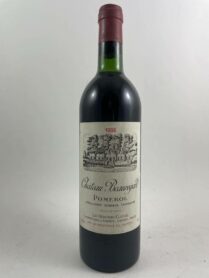
Château Beauregard 1986
€36.00Pomerol | Red | 0,75 L
-

Château de Sales 1988
€34.80Pomerol | Red | 0,75 L
-
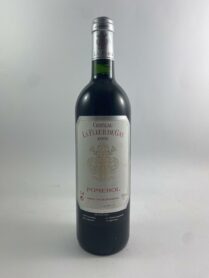
Château la Fleur de Gay 2000
€136.80Pomerol | Red | 0,75 L
-

Château Trotanoy 2005
€358.80Pomerol | Red | 0,75 L
-
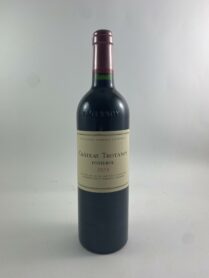
Château Trotanoy 2018
€302.40Pomerol | Red | 0,75 L
-

Château Beauregard 1981
€66.00Pomerol | Red | 0,75 L
-
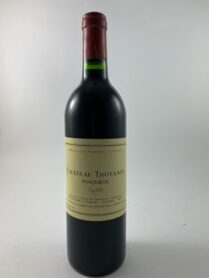
Château Trotanoy 1986
€222.00Pomerol | Red | 0,75 L
-
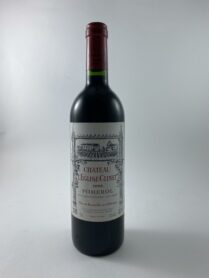
Château l’Église Clinet 1996
€210.00Pomerol | Red | 0,75 L
-
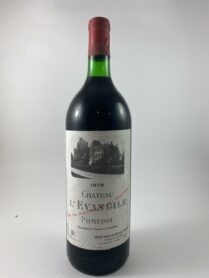
Château l’Évangile 1979
€576.00Pomerol | Red | 1,5 L
-

Château la Fleur-Pétrus 2001
€219.60Pomerol | Red | 0,75 L
-
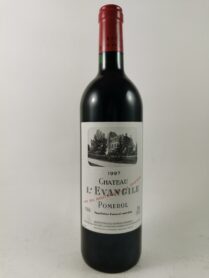
Château l’Évangile 1997
€148.80Pomerol | Red | 0,75 L
-
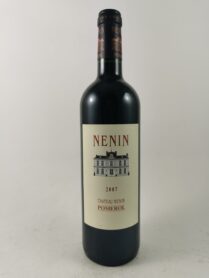
Château Nenin 2007
€54.00Pomerol | Red | 0,75 L
Each Château invites you to a particular oenological experience that brings out all the senses and reveals the specificities of its vineyards. Generally speaking, the wines of Pomerol are defined by their predominantly Merlot character:
- A very colorful dress between ruby red and dark red with garnet reflections.
- A delicate, rich and inimitable well-structured bouquet. Their aromas are intense, dominated by red fruits (cherries, raspberries…) and those of the undergrowth (blackberries…). They are also marked by notes of violet, truffles and mocha as well as some leather.
- Silky tannins, sometimes fleshy in the mouth, which reveal themselves from the attack and leave an impression of velvet and sap, of delicacy and intensity.
Of great power and impressive persistence in the mouth when bottled, they tend to soften and become rounder with the years.
Some Chateaux Pomerol
Beyond the inevitable Petrus, Pomerol has more than 320 wineries and chateaux, most of which have remained in the family.
Petrus, a rare estate without a castle
How not to start this little selection with the most famous one? The estate (11.5 ha), which extends over the most beautiful area of the Pomerol plateau, has belonged to the Moueix family since 1947 (and since 2018 20% to a Colombian shareholder). Approximately 30,000 bottles are produced per year and some reach exorbitant amounts. The 1959 vintage is more than 6 400 € and the Petrus 2000, Cuvée de l’espace, is simply the most expensive in the world… estimated at 830 000 €!
The grape variety is composed of black merlot (95%) and black Cabernet-Franc (5%). The harvest is done by hand over 3-4 afternoons in order to avoid the morning dew and the vinification in cement tanks. Before bottling, the wine is kept for 12-16 months in oak barrels (half new).
This elegant sensual wine with an inimitable intense taste has the characteristic aromas of the AOC but most of the vintages are sublimated by discreet notes (spices…). 1950, 1961, 1964, 2005 and 2010 are the most recent exceptional vintages, recognized as the best Grands Crus of Bordeaux. In this article, we present you the Pomerol domain, recognized and quality wines at the best price.
Chateau L’Église Clinet, Pomerol, quality wine
The vineyard of the Château de l’Eglise Clinet (4.5 ha) located around the Church of Saint-Jean-de-Pomerol at the top of the AOC produces great wines for ageing since 1882. Denis Durantou, great-great-grandson of the first owner, is at the helm and produces a great wine (Merlot 85%, Cabernet Franc 15%). Its vines of more than 40 years are close to those of Petrus. His second wine is La Petite Église red.
Château La Conseillante
Owned by the Nicolas family, Château La Conseillante de Pomerol has been managed since 2004 by Jean-Michel Laporte, who produces by integrated farming and plot-based vinification. The vineyard (12 ha) located between Petrus and Cheval Blanc is 80% Merlot and 20% Cabernet Franc. Its bottles are recognizable by their purple capsule and the coat of arms “LN” (Louis Nicolas) always present on the silver-edged label. His second red wine is the Duo de Conseillante (since 2007).
Château Lafleur
The first wine occupies ¾ of the Guinaudeau vineyard located a few hundred meters from Petrus. The distribution of its grape varieties (50% Merlot, 50% Cabernet Franc) makes it an original Pomerol. The vines of more than 50 years are manually harvested, the vinification in stainless steel and concrete tanks and the ageing in half new barrels. Its 2010 and 2019 vintages are precious.
Château Clinet, Pomerol
This estate, run by Ronan Laborde, has been in his family since 1998. It is an exception since it produces 2 reds and 1 white alongside its great red wine from superb gravel plots. Since 2006, Fleur de Clinet is his second wine and Ronan by Clinet (100% merlot) is available in red and white. The latter is made from Semillon and Sauvignon of the Château.
Château l’Évangile
It is part of the Barons de Rothschild estates and the quality of its Premier Cru is constantly improving. At his side, a second wine since 1990, Le Blason de l’Évangile.
Château Le Pin
This small estate (5 ha) with 100% Merlot grapes located in the hamlet of Catusseau produces a red wine that is regularly among the most expensive. Note that the 2003 vintage is non-existent due to drought.
You will also like Vieux Chateau Certan (strong in Cabernet, 40%) or Chateau Gazin (near Petrus and Chateau l’Evangile), and Chateau Totanoy but the list goes on.
The best vintages of Pomerol wines
Pomerol wines and grands crus are remarkable, but some vintages are even better. 1928, 1953, 1985, 1986, 1989 and 2000 are considered exceptional years. Without going back too far, favour 1996, 1998, 2000, 2005 or 2009 if you are looking for a good Pomerol.
The wines of Pomerol invite themselves to your table
“The Pomerols, which must have a minimum alcoholic strength of 10.5°, can be enjoyed young and well before the Médoc wines. Their originality lies in the fact that they are also endowed with a great ageing potential (7 to 20 years, even more for the great vintages). These exceptional wines can be enjoyed with almost any food, but they go perfectly with meats, game and cheeses. A Pomerol should ideally be decanted, aerated for 3-4 hours in order to bring out its aromas and enjoyed at a temperature of 16°C.
Tournedos à la bordelaise, braised beef, fillet of beef, duck breast, veal chop, salt-crusted roast lamb from Pauillac, stuffed turkey, squab stuffed with foie gras… will simply be enhanced by a Pomerol. The vintages of the AOC also accompany perfectly the entries (terrine of pheasant, rabbit pâté?). Don’t forget the cheese (Saint-Marcellin, Rigotte du Forez…).
A white Pomerol like the Ronan by Clinet will be excellent with a truffle omelette, fish or poultry.
The domains and best wines of Pomerol nearby
Pomerol is surrounded by estates such as Lalande-de-Pomerol, Montagne-Saint-Emilion, Lussac-Saint-Emilion, Puisseguin-Saint-Emilion, Saint-Georges-Saint-Emilion, Fronsac, Canon-Fronsac… To the north of the Libournais wines, the Blayais-et-Bourgeais grands crus, to the north-west those of the Médoc and closer to the Entre-de-Mers and Bordeaux. Pomerol has nothing to envy to the Graves, Saint-Emilion and other appellations of the famous classification of 1855.
Good tasting (in moderation) and know that you have little risk of making a mistake with a Pomerol. It always seduces by its density, its personality and its deep aromas. To discover the other domains, find the Margaux, Pauillac, Saint Julien, Sauternes, Saint Estèphe and Pessac Léognan wines.
